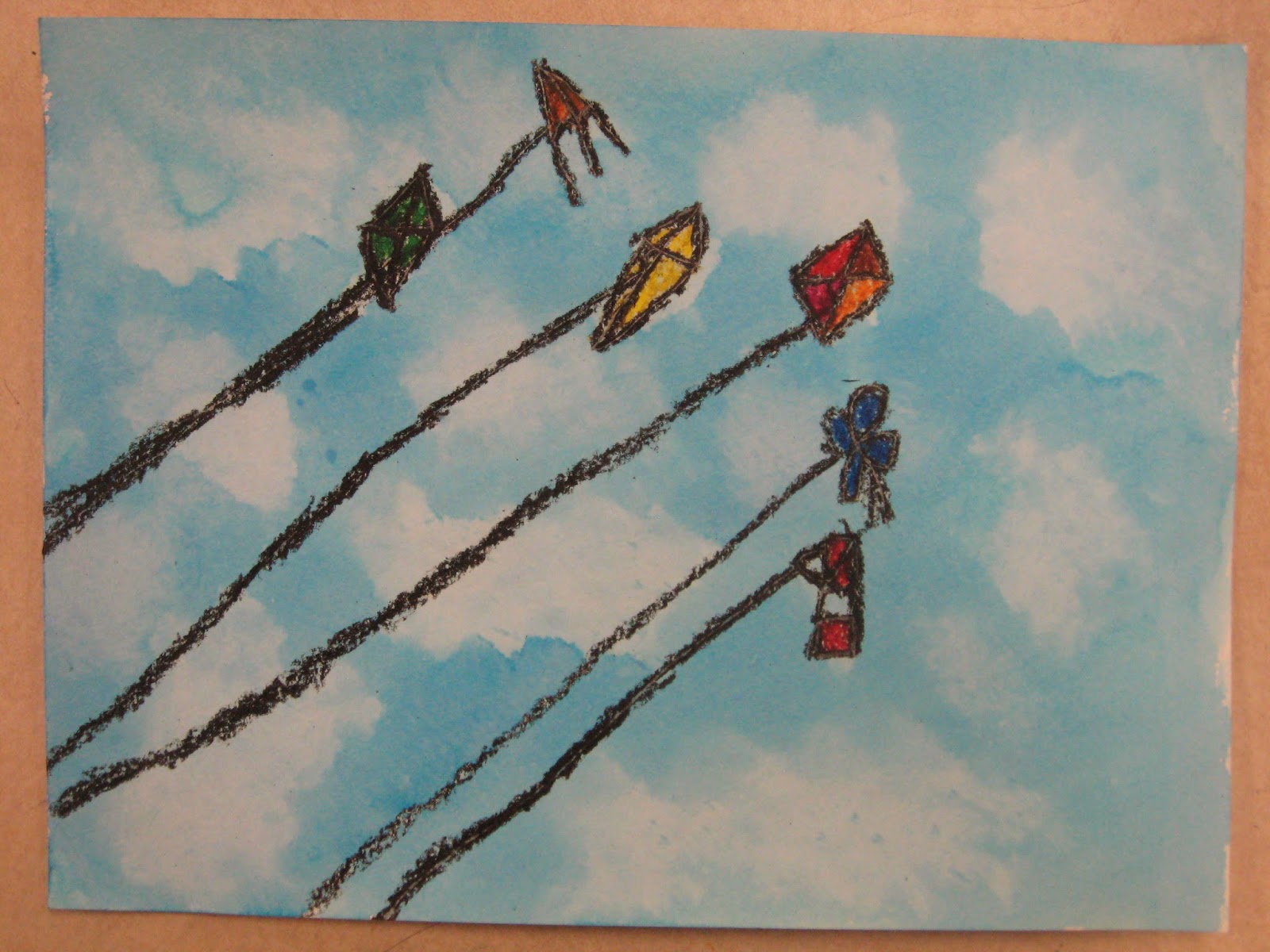Here are a few examples of student work:
The sunset background is a simple exercise in painting a yellow circle, gradually adding red to the paint, and painting a ring around the circle with each new shade.
Without enough guidance, some students paint palm trees that are just a few inches tall on this 12"x18" paper. I have developed a few rules to help the students paint the best palm trees they can.
First, they pencil in the tree trunks; they need to be at least as tall as the yellow circle in the middle of the page.
Next, coconuts are added, which are simple circles. The students can choose how many they want.
Next, about 5 lines are added coming out of the coconuts. The students often make these lines too short, so they have to get checked by me. Once I ok their lines, they may get a paint brush and begin painting.
First, the students paint in all of the shapes and lines they drew with pencil.
Then, they add small lines to the five branches. These lines can be any length and width, as there are many varieties of palm trees.
The same steps are followed for other palm trees.
Lastly, some sand is painted along the bottom of the painting. The land can be bumpy and lumpy; I like the students to just paint it, without sketching it ahead of time, but I always have a few students who are afraid to paint anything without drawing first!
This is the only step-by-step lessons I teach to 4th grade; generally, I leave a lot of room for creativity. But, this lesson is a huge confidence booster, as nearly every student leaves with a masterpiece; also, the students gain a lot from the color mixing portion of the lesson. After this project, most of the students are very comfortable mixing tertiary colors like red-orange and yellow-orange. And, despite the rigidity of the instructions, each student's palm trees end up looking so unique!











.jpg)
.jpg)
.jpg)
.jpg)
.jpg)
.jpg)


.jpg)
.jpg)
.jpg)
.jpg)
.jpg)
.jpg)
.jpg)
.jpg)
.jpg)






















